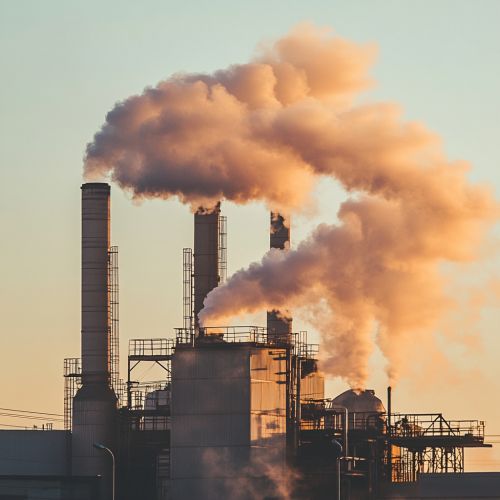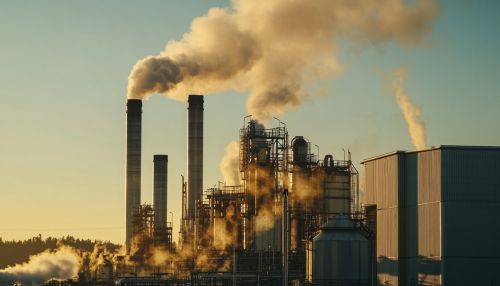National Emission Standards for Hazardous Air Pollutants
Introduction
The National Emission Standards for Hazardous Air Pollutants (NESHAP) are a set of regulations established under the United States Clean Air Act (CAA) aimed at controlling emissions of hazardous air pollutants (HAPs) from various industrial sources. These standards are designed to protect public health and the environment by reducing the release of toxic air contaminants. The Environmental Protection Agency (EPA) is responsible for developing and enforcing NESHAP, which apply to both new and existing sources of air pollution.
Background and Legislative Framework
The Clean Air Act, first enacted in 1963 and significantly amended in 1970, 1977, and 1990, serves as the primary federal law governing air pollution control in the United States. The 1990 amendments introduced a comprehensive program to address hazardous air pollutants, which are known or suspected to cause cancer or other serious health effects. The amendments mandated the EPA to identify and regulate 189 HAPs, which include substances like benzene, asbestos, and mercury.
NESHAP are developed under Section 112 of the CAA, which outlines the process for identifying and listing HAPs, establishing emission standards, and ensuring compliance. The standards are based on the Maximum Achievable Control Technology (MACT), which represents the best-performing technology or practices available for controlling emissions.
Development of Standards
The development of NESHAP involves a rigorous scientific and technical process. The EPA conducts extensive research to identify sources of HAPs and assess the risks they pose to human health and the environment. This process includes:
1. **Source Category Listing**: The EPA identifies and lists categories of industrial sources that emit significant quantities of HAPs. These categories include industries such as chemical manufacturing, petroleum refining, and metal processing.
2. **Risk Assessment**: The EPA performs risk assessments to evaluate the potential health and environmental impacts of HAP emissions. This involves analyzing exposure pathways, toxicity data, and population vulnerability.
3. **Technology Review**: The EPA reviews available control technologies and practices to determine the MACT for each source category. This involves evaluating the performance, cost, and feasibility of various emission control options.
4. **Standard Setting**: Based on the MACT analysis, the EPA establishes emission standards that reflect the maximum reduction in emissions achievable by the best-performing sources. These standards are designed to be technology-based rather than risk-based, ensuring that all sources within a category achieve a consistent level of control.
Implementation and Compliance
Once NESHAP are established, industrial sources must implement measures to comply with the standards. Compliance involves several key components:
1. **Permitting**: Facilities subject to NESHAP must obtain permits that specify emission limits and monitoring requirements. These permits are issued by state or local air pollution control agencies, which are responsible for overseeing compliance.
2. **Monitoring and Reporting**: Facilities are required to monitor their emissions and report data to the EPA or the relevant state agency. This ensures that emissions remain within the prescribed limits and allows for the identification of any violations.
3. **Inspections and Enforcement**: The EPA and state agencies conduct inspections to verify compliance with NESHAP. Enforcement actions may be taken against facilities that fail to meet the standards, including fines, penalties, and orders to implement corrective measures.
4. **Continuous Improvement**: NESHAP are subject to periodic review and revision to incorporate advances in technology and address emerging risks. This ensures that the standards remain effective in protecting public health and the environment.
Impact on Industry and Environment
NESHAP have had a significant impact on reducing emissions of hazardous air pollutants across various industries. By requiring the adoption of advanced emission control technologies, these standards have led to substantial reductions in air toxics, contributing to improved air quality and public health outcomes.
Industries have responded to NESHAP by investing in cleaner technologies and practices, which has also driven innovation and competitiveness. While compliance with NESHAP can involve significant costs, the benefits in terms of reduced health risks and environmental protection are considerable.
Challenges and Criticisms
Despite their success, NESHAP have faced several challenges and criticisms:
1. **Economic Impact**: Some industries argue that the costs of compliance with NESHAP are burdensome, particularly for small businesses. Balancing economic considerations with environmental protection remains a key challenge for policymakers.
2. **Technological Feasibility**: The reliance on MACT means that NESHAP are technology-based, which can limit flexibility for industries in achieving compliance. Critics argue that more flexible, performance-based standards could encourage innovation and cost-effectiveness.
3. **Risk Assessment Limitations**: The risk assessments used to develop NESHAP are complex and subject to uncertainty. Critics argue that the EPA should improve its methodologies to better account for cumulative and synergistic effects of multiple pollutants.
4. **Enforcement and Compliance**: Ensuring consistent enforcement and compliance across states and industries can be challenging. Variations in state resources and priorities can lead to disparities in the effectiveness of NESHAP implementation.
Future Directions
The future of NESHAP will likely involve continued refinement and adaptation to address emerging challenges and opportunities. Key areas of focus may include:
1. **Advancements in Monitoring and Control Technologies**: As new technologies emerge, NESHAP will need to incorporate these advancements to ensure continued effectiveness in reducing emissions.
2. **Integration with Climate Policies**: As concerns about climate change grow, there may be opportunities to align NESHAP with broader climate policies, such as reducing greenhouse gas emissions.
3. **Community Engagement and Environmental Justice**: Increasing attention to environmental justice issues may lead to greater emphasis on protecting vulnerable communities from disproportionate exposure to hazardous air pollutants.
4. **International Collaboration**: As air pollution is a global issue, there may be opportunities for greater collaboration with international partners to harmonize standards and share best practices.
Conclusion
The National Emission Standards for Hazardous Air Pollutants represent a critical component of the United States' efforts to protect public health and the environment from the harmful effects of air toxics. While challenges remain, the continued evolution and implementation of NESHAP will be essential in addressing the complex and dynamic landscape of air pollution control.


